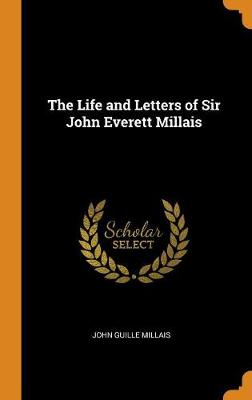Cambridge Library Collection - Art and Architecture
2 primary works • 4 total works
Volume 1
The Life and Letters of Sir John Everett Millais: Volume 1
by John Guille Millais
Published 20 September 2012
A prodigiously talented artist, Sir John Everett Millais (1829–96) co-founded the Pre-Raphaelite Brotherhood with Rossetti and others, helping to revolutionise the Victorian art world. The minute realism of paintings like Christ in the House of his Parents, and his high-profile marriage to Ruskin's ex-wife Effie, were gradually accepted, and the iconic Ophelia was widely admired. Success as an illustrator also put him in the public eye, with the engravings market bringing him new wealth. With popularity came a return to more traditional forms in portraiture and landscape, inspired by Reynolds, Velázquez and the Old Masters, although he also played off Whistler and the aesthetic movement. He became president of the Royal Academy in the last year of his life. His son, John Guille Millais (1865–1931), published this highly illustrated and acclaimed two-volume biography in 1899. Volume 1 provides an account of Millais' most influential years up to 1867.
Volume 2
A prodigiously talented artist, Sir John Everett Millais (1829-96) co-founded the Pre-Raphaelite Brotherhood with Rossetti and others, helping to revolutionise the Victorian art world. The minute realism of paintings like Christ in the House of His Parents, and his high-profile marriage to Ruskin's ex-wife Effie, were gradually accepted, and the iconic Ophelia was widely admired. Success as an illustrator also put him in the public eye, with the engravings market bringing him new wealth. With popularity came a return to more traditional forms in portraiture and landscape, inspired by Reynolds, Velazquez and the Old Masters, although he also played off Whistler and the aesthetic movement. He became president of the Royal Academy in the last year of his life. His son, John Guille Millais (1865-1931), published this highly illustrated and acclaimed two-volume biography in 1899. Volume 2 applauds the freedom and breadth of treatment in Millais' later work.
The Life and Letters of Sir John Everett Millais 2 Volume Set
by John Guille Millais
Published 20 September 2012
A prodigiously talented artist, Sir John Everett Millais (1829-96) co-founded the Pre-Raphaelite Brotherhood with Rossetti and others, helping to revolutionise the Victorian art world. The minute realism of paintings like Christ in the House of His Parents, and his high-profile marriage to Ruskin's ex-wife Effie, were gradually accepted, and the iconic Ophelia was widely admired. Success as an illustrator also put him in the public eye, with the engravings market bringing him new wealth. With popularity came a return to more traditional forms in portraiture and landscape, inspired by Reynolds, Velazquez and the Old Masters, although he also played off Whistler and the aesthetic movement. He became president of the Royal Academy in the last year of his life. His son, John Guille Millais (1865-1931), published this highly illustrated and acclaimed two-volume biography in 1899.
The Life and Letters of Sir John Everett Millais: Volume 2
by John Guille Millais
Published 5 May 2013
A prodigiously talented artist, Sir John Everett Millais (1829–96) co-founded the Pre-Raphaelite Brotherhood with Rossetti and others, helping to revolutionise the Victorian art world. The minute realism of paintings like Christ in the House of His Parents, and his high-profile marriage to Ruskin's ex-wife Effie, were gradually accepted, and the iconic Ophelia was widely admired. Success as an illustrator also put him in the public eye, with the engravings market bringing him new wealth. With popularity came a return to more traditional forms in portraiture and landscape, inspired by Reynolds, Velázquez and the Old Masters, although he also played off Whistler and the aesthetic movement. He became president of the Royal Academy in the last year of his life. His son, John Guille Millais (1865–1931), published this highly illustrated and acclaimed two-volume biography in 1899. Volume 2 applauds the freedom and breadth of treatment in Millais' later work.


